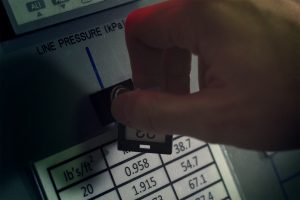Decoding the Advanced Technologies of Modern Racing Vehicles
As car enthusiasts, we have always been fascinated by the world of racing vehicles. The speed, the precision, and the technology involved in creating these machines is simply mind-blowing. And as the automotive industry is constantly evolving, so are the technologies used in modern racing vehicles. From aerodynamics and lightweight materials to advanced electronics and computer systems, today’s racing vehicles are the perfect blend of innovation and performance. In this article, we will decode the advanced technologies used in modern racing vehicles and understand how they are changing the game for racers around the world.
Aerodynamics: The Key to Speed and Stability
When it comes to racing, aerodynamics plays a crucial role in improving the speed and stability of a vehicle. That’s why modern racing vehicles are designed with sleek and aerodynamic bodies that reduce drag and increase downforce. By using techniques like wind tunnel testing and computational fluid dynamics, engineers can fine-tune every aspect of a vehicle’s design to achieve the perfect balance between speed and stability.
One of the most notable advances in aerodynamics is the use of active aerodynamics. This technology allows for adjustments in real-time, depending on the racing conditions, to maximize performance. For example, adjustable rear wings can be lowered to reduce drag on straighter tracks and raised to increase downforce on curvier tracks. This level of control over a vehicle’s aerodynamics has led to significant improvements in lap times and overall performance.
Lightweight Materials: Shaving off Precious Seconds
In racing, every second counts. That’s why modern racing vehicles are built with lightweight materials such as carbon fiber, titanium, and aluminum. These materials not only reduce the overall weight of the vehicle, but they also provide higher strength and rigidity, allowing for better handling and improved performance.
Carbon fiber, in particular, has become the go-to material for racing vehicles due to its high strength-to-weight ratio. It is also used to create complex and aerodynamic body shapes that were previously impossible to achieve with traditional materials. This has not only improved the performance of racing vehicles but has also pushed the boundaries of what is possible in terms of design.
The Rise of Advanced Electronics and Computer Systems
Gone are the days when racing vehicles were purely mechanical machines. Today, they are equipped with advanced electronics and computer systems that play a crucial role in achieving optimum performance. Electronic systems such as traction control, launch control, and anti-lock braking systems (ABS) help racers maintain control over their vehicles at high speeds.
In addition, data acquisition and telemetry systems are also extensively used in modern racing vehicles. These systems collect data on various parameters such as tire pressure, engine performance, and suspension settings, allowing engineers to fine-tune the vehicle for maximum performance. In some cases, this data is even transmitted in real-time to the pit crew, who can provide valuable insights and instructions to the driver.
The Future of Racing: Autonomous Vehicles and Artificial Intelligence
As technology continues to advance, it is no surprise that we are now seeing the integration of autonomous vehicle technologies in racing. In 2016, the first-ever race between fully autonomous vehicles, the Roborace, took place. This event showcased the potential of artificial intelligence and its ability to learn and adapt in high-speed racing scenarios.
While we are still a long way from seeing fully autonomous racing vehicles on the track, this development is a testament to how technology is shaping the future of racing. Who knows, in a few years, we might see AI-driven vehicles competing against each other at the highest level of racing.
In Conclusion
From aerodynamics to lightweight materials and advanced electronics, modern racing vehicles are the perfect example of how technology is revolutionizing the automotive industry. As engineers continue to push the boundaries and explore new technologies, we can only imagine what the future holds for the world of racing. But one thing is for sure, the advanced technologies used in modern racing vehicles have changed the game for racers and will continue to do so for years to come.











